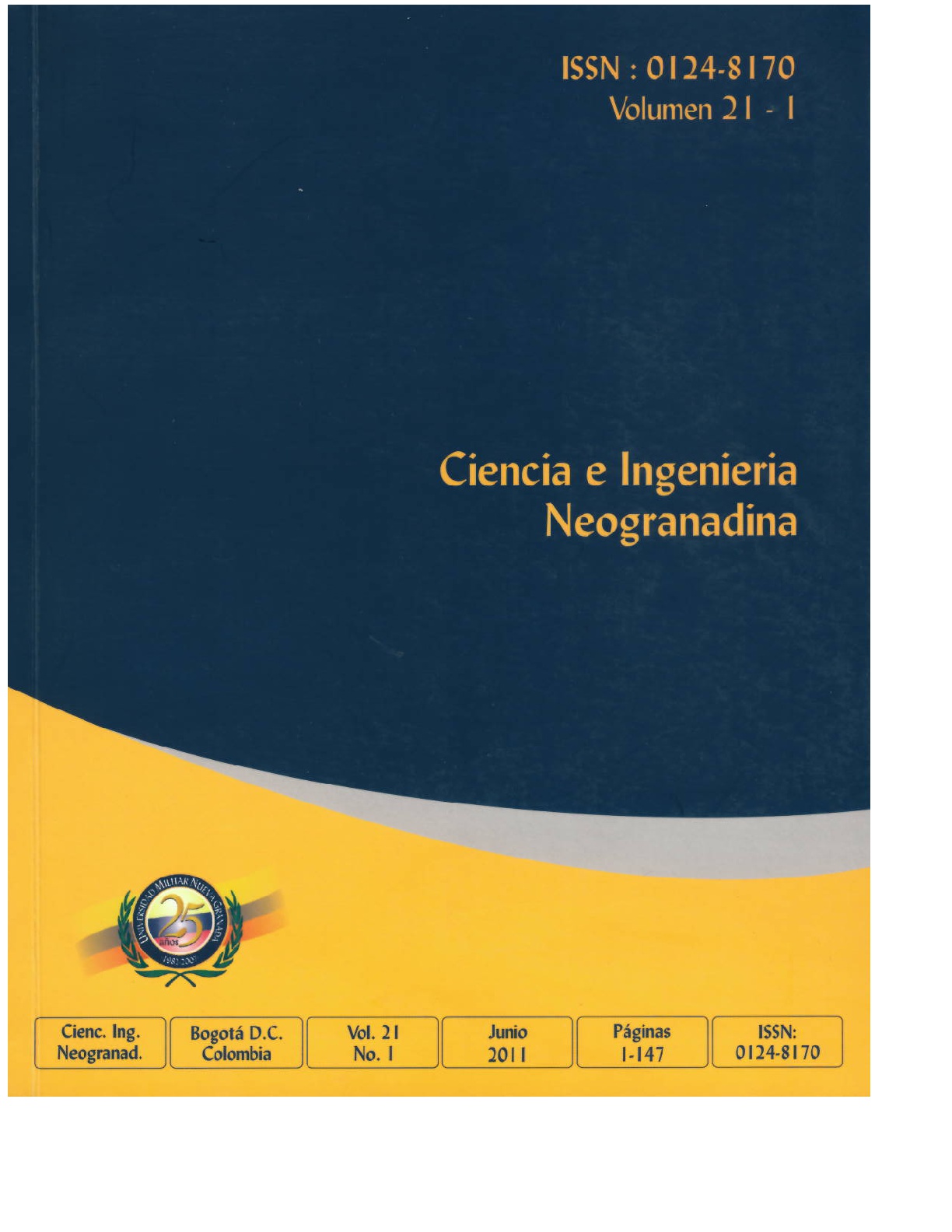Optimización dimensional de un robot paralelo tipo Delta basado en el menor consumo de energía
Resumen
Este artículo presenta el cálculo óptimo de las dimensiones de un robot paralelo tipo delta basado en el menor consumo de energía. También incluye la descripción de la plataforma experimental, y un análisis cinemático y dinámico. El algoritmo de optimización (algoritmos genéticos), tiene en cuenta restricciones tales como: cubrimiento de un espacio de trabajo semiesférico de un radio específico y el análisis de interferencias.Descargas
Lenguajes:
esAgencias de apoyo:
Universidad de Pamplona, Universidad Nacional de ColombiaReferencias bibliográficas
Baykal S. G., (2010). Green Automation, Automatica 2010, International Trade Fair for Automation and Mechatronics.
Albers, A. and Ottnad, J. (2009). Integrated structural and controller optimization for lightweight robot design. Humanoid Robot 9th. IEEE-RAS International Conference, pp. 93 -98. http://dx.doi.org/10.1109/ichr.2009.5379593
Bailon W., Cardiel E., Campos I. y Paz A. (2010). Mechanical energy optimization in trajectory planning for six DOF robot manipulators based on eighth-degree polynomial functions and a genetic algorithm. Electrical Engineering Computing Science and Automatic Control (CCE), 7th International Conference, pp. 446 -451.
Kolibalbal Z., and Smetanova A., (2010). Experimental implementation of energy optimization by robot movement. Robotics in Alpe-Adria-Danube Region (RAAD). IEEE 19th International Workshop, pp. 333 -339. http://dx.doi.org/10.1109/RAAD.2010.5524564
Vergnano A., Thorstensson C., Lennartson B., Falkman P., Pellicciari M., Yuan C., Biller S. y Leali F., (2010). Embedding detailed robot energy optimization into high-level scheduling. Automation Science and Engineering (CASE), IEEE Conference, pp. 386 -392. http://dx.doi.org/10.1109/coase.2010.5584686
Merlet J. P., (2006). Parallel Robots (Solid Mechanics and Its Applications), New York: Springer-Verlag.
Ranky P.G., (2010). Sustainable green product design and manufacturing / assembly systems engineering principles and rules with examples. Sustainable Systems and Technology (ISSST). IEEE International Symposium. http://dx.doi.org/10.1109/ISSST.2010.5507706
Zhi-Gang Xu, Li-Yan Shen, Wen-Guang Chen, (2006). Conceptual Green design, challenge and strategies.Industrial Electronics. IEEE International Symposium. http://dx.doi.org/10.1109/isie.2006.296081
Glantschnig W.J., (2002). Green design: an introduction to issues and challenges. Components. Packaging and Manufacturing Technology. Part A, IEEE Transactions.
Liu X.J., Jin Z.L., and Gao F., (2000). Optimum design of 3-DOF spherical parallel manipulators with respect to the conditioning and stiffness indices In: Mechanism Machine Theory 35, pp. 1257- 1267. http://dx.doi.org/10.1016/s0094-114x(99)00072-5
Clavel R., (1989). Une nouvelle structure de manipulateurparallèle pour la robotiquelégère. Journal Européen des SystèmesAutomatisés, 23 (6), pp. 501-519.
Lou Y., Liu G., Chen N., and Li Z., (2005). Optimal design of parallel manipulators for maximum effective regular workspace, Proc. IEEE/RSJ Int. Conf. on Intel. Robots Sys., pp. 795-800. Alberta.
Qiaoling Yuan, Shiming J.i., Zhongfei Wang, Guan Wang, Yuehua Wan, Li Zhan, (2008). Optimal design of the linear delta robot for prescribed cuboid dexterous workspace based on performance chart. Proceedings of the 8th WSEAS International Conference on Robotics. In: Control and Manufacturing Technology, p.35-41, Hangzhou, China.
Courteille E., Deblaise D., and Maurine P., (2009). Design optimization of a Delta-like parallel robot through global stiffness performance evaluation. IEEE. In: Intelligent Robots and Systems, 2009. IEEE/RSJ International Conference. http://dx.doi.org/10.1109/iros.2009.5353906
Stock M., and Miller K., (2003). Optimal design of spatial parallel manipulators: application to linear DELTA robot, In: ASME J. Mech. Des., Vol. 125, pp. 292-301. http://dx.doi.org/10.1115/1.1563632












